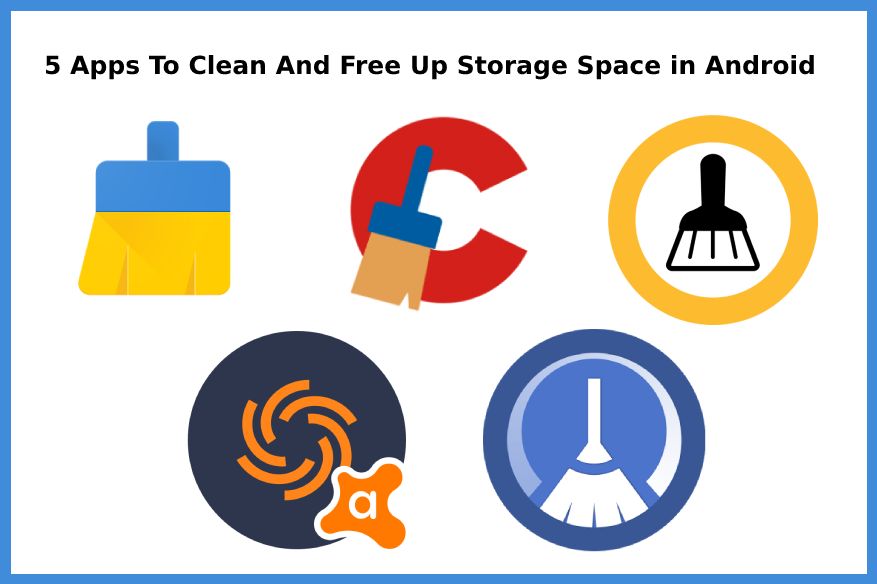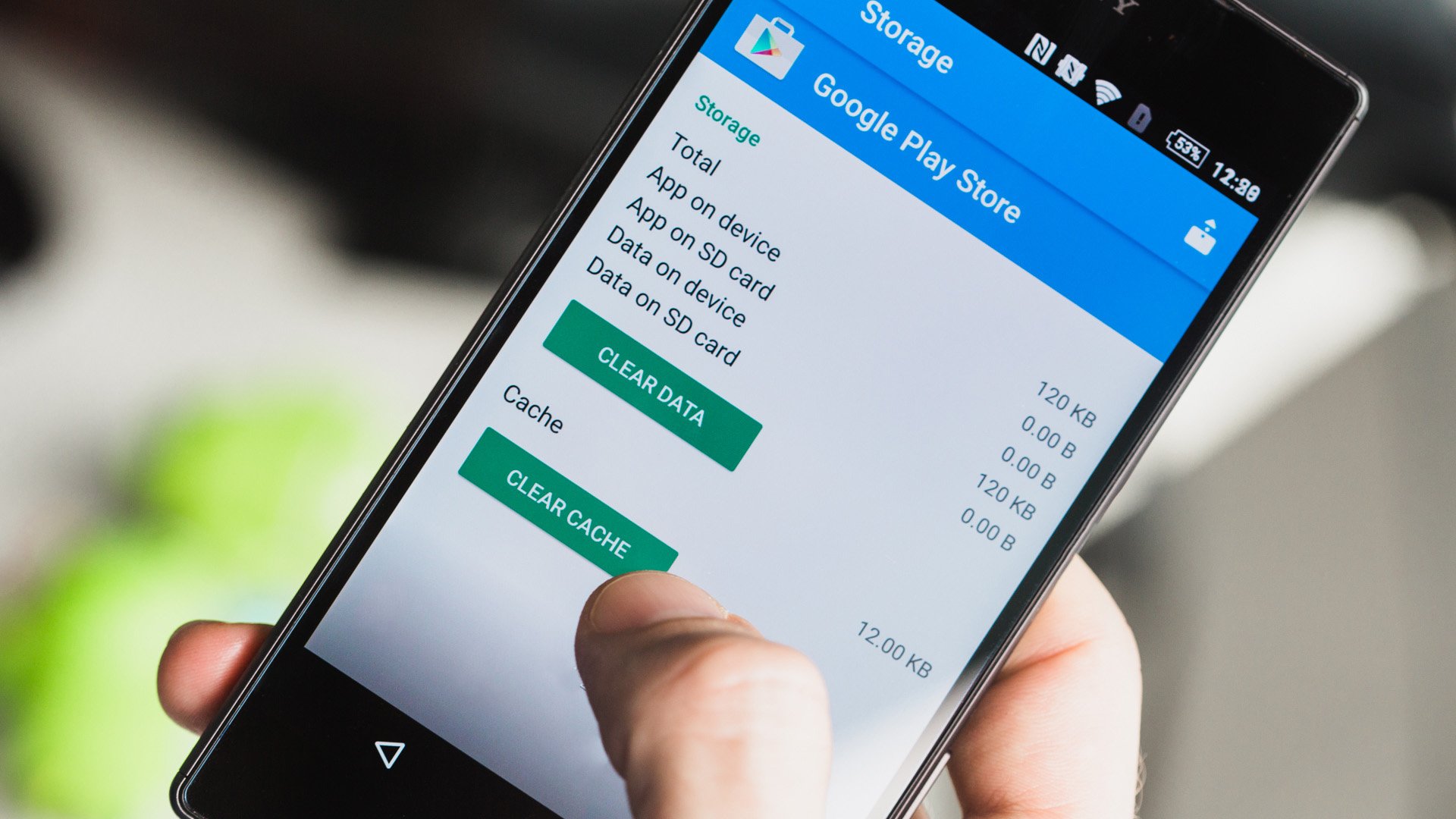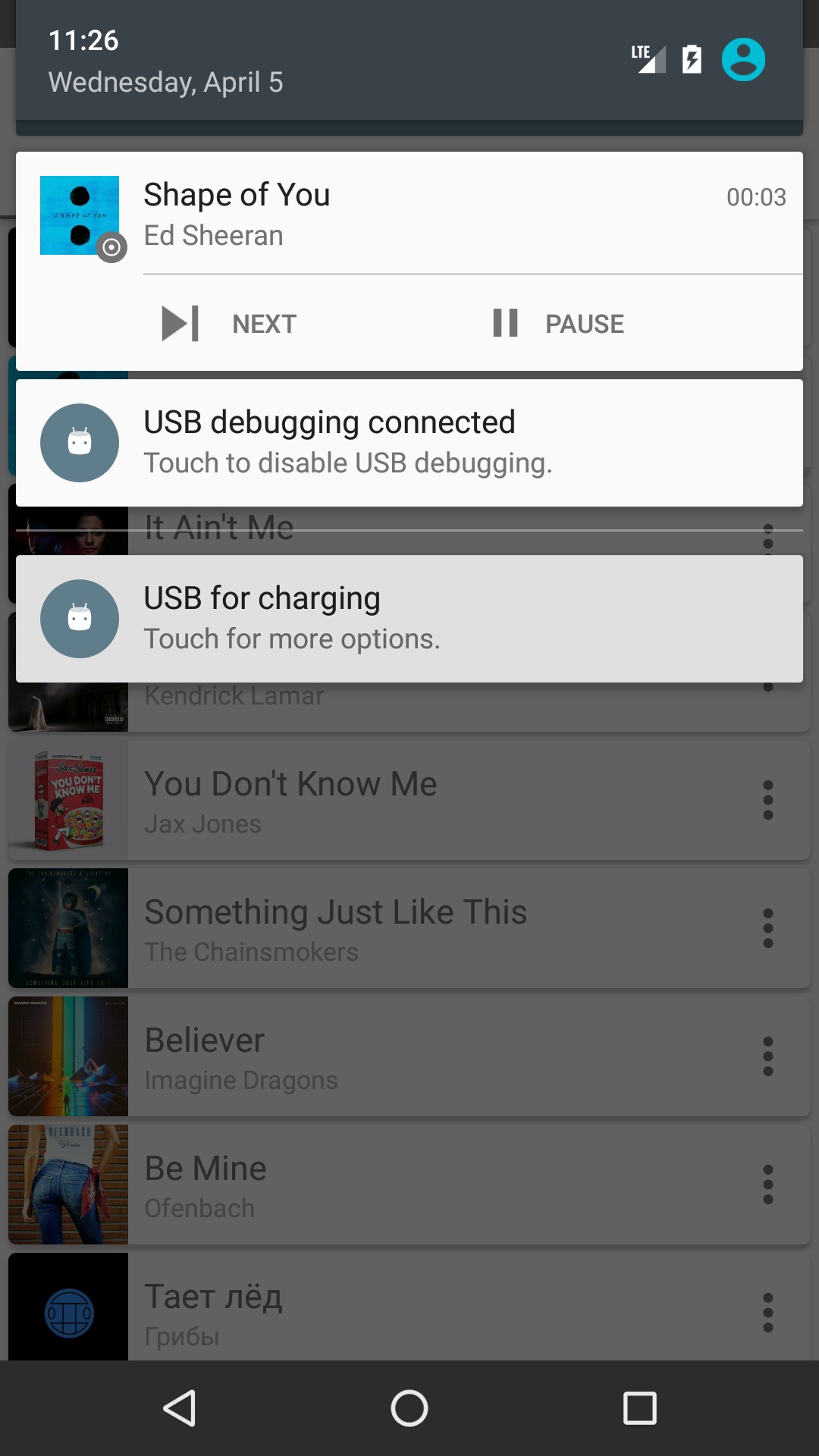Click the button Storage and Clear Cache; If you're running Android 6.0 Marshmallow on your device, like my Huawei Android 6.0, simply click on Files and then Clean up. How to free up storage space on your Android phone: Clear your Android phone’s cache. After using a phone for a few months, chances are you’ll have at least a gig of cached data cluttering up.
- How To Clear Space On Android Phone
- How To Clear Storage On Ipad
- How To Clear Up Storage Space On Android
- How To Free Up Memory On Android
- Increase Storage On Android Phone
- How-to-free-up-storage-on-android Download
No matter how large your internal storage is, you cannot install unlimited applications and store large amounts of files all the time. In another word, your Android phone storage will be full sooner or later. When there is no enough storage space, and you need to update your Android or install one important application, what will you do? And what if you want to sell or donate your personal smart phone to someone else? Can you protect your private information effectively?
Therefore, you had better clear phone storage regularly no matter the phone storage is full or not. Though you can move certain files and apps to microSD card or other external hard drives, it is still important to clear memory Android to maintain the normal operating space. Fortunately, this article collects some useful and easy-to-operate solutions. As a result, you are able to free up storage and memory space with ease.
Part 1: How to Clear Phone Storage
You can try the traditional way to clear phone storage space on Android by deleting useless files. And it is also supported to install an Android cleaner app to save your overstuffed mobile. Moreover, this article also shows how to get more space on your phone without deleting anything. You can read and choose the certain solution to free up space on Android.
Delete Your Downloads
To download more apps and media files, or clear system memory, you can delete some less important files manually. If you are not sure whether you will use those files in the further or not, you can backup Android files to cloud storage space in advance.
Step 1. Locate your download folder
Every Android phone has its own download folder. All your downloaded photos, videos, documents and other files will be stored in the local downloads folder. In some Android models, this folder may be called as 'My Files' as well.
Step 2. Clear internal phone storage on Android

Turn to your download history and find files you want to delete. Just long press one file to select it. Later, click 'Remove' or other trashcan icon to delete downloads when internal storage Android full.
Clear the Cache
Furthermore, you need to clear cached data on your Android phone regularly. And you will not lose any sensitive or important Android data. In most cases, cleaning app cache is the first decision you can make.
Method 1: Clear cached data from an Android app.
Open 'Settings' app. Choose 'Applications' and scroll down to click 'Application Manager'. Later, you can find the target application. When you are in the Application info page, click 'Storage' and then choose 'Clear Cache' to clear the cache on Android.
Method 2: Clear all cached data on Android
Go to 'Settings' and click 'Storage' under its list. Find and click 'Cached data'. When you are prompted with 'This will clear cached data for all apps.', choose 'OK' to confirm. After that, you can clear phone memory Android successfully.
Take Advantage of Google Photos
Actually, Google Photos app is a good cloud storage tool that allows users to backup unlimited photos over the air. Thus, you can move all pictures from Android to Google Photos to free up more space on Android.
Step 1. Turn on Google Photos backup feature
Run Google Photos app on your Android phone. Make sure you have turned on 'Back up & sync' feature under 'Settings' already.
Step 2. Backup Android photos to Google Photos
You can set whether to backup Android photos at high quality resolution or original size. Well, Google Photos only offers unlimited storage space for high quality photos at present.
Step 3. Clear phone storage space on Android
Then go back to Settings app and choose 'Free up device storage'. Click 'Remove' to delete Android pictures that have been backed up.
Move APPs to the Trash
If you have not used the certain application for a long time, and you are sure that you have no interest to use this app any more, then why don't you move it to the trash?
Step 1. Access all Android apps
Navigate 'Settings' app. Head to 'Storage' and click 'Apps'. Later, you can see all installed apps sorted by size.
Step 2. Clear phone storage on Android by deleting apps
Hold and press the app you do not use. then click the 'i' icon besides your app's name. Choose 'Uninstall' and confirm your change.
APP to Clear Phone Storage
By free installing Files Go from Google Play Store, you can visualize the left storage space exactly. And it is easy to clear phone storage on Android by deleting temporary files, downloads and other files easily.
Step 1. See all your Android files organized by Files Go
Launch Files Go and grant storage permissions and app access. Then you can monitor the storage usage including unused apps, duplicate files, temporary files, etc.
Step 2. Clear phone storage Android
Choose the certain category and select items you want to delete. Later, click 'Delete' to clean up your Android, or choose 'Clear' to uninstall apps and free up Android phone storage space.
Part 2: How to Get More Space on Your Phone without Deleting Anything
Android Data Backup & Restore is your best friend, which can backup and restore any Android data to Windows or Mac PC in one click. Thus, you can backup data to your computer to clear phone storage space on Android. It is quite easy to achieve, and no Android data will be overwritten.
- One click to backup and restore data from Android to Windows or Mac PC.
- Preview and select any data to restore to your Android without data loss.
- Set up password to encrypt your Android backup files.
- Work with over 5,000 Android portable devices including Samsung, Sony, LG, etc.
Step 1. Connect Android to PC
Launch Android Data Backup & Restore. Then use a lighting USB cable to connect your Android phone or tablet to your computer. Click 'One-click Backup' to backup all Android files to PC. Otherwise, you can click 'Device Data Backup' to backup certain Android file types without overwriting.
Step 2. Select data type to backup (optional)
If you want to backup Android data to your computer selectively, then you can select the data type in the popping up window.


Step 3. Backup data from Android to PC
Then choose 'Start' to backup Android data to PC immediately. And you can have a check when the backup is over.
After that, you can clear phone storage by deleting all Android files. If you accidentally deleted important files, just use this software as the backup extractor or to get deleted data back.
Well, it is also a good way that can increase internal storage Android in some degree. In addition, even though your Android device is broken or crashed, you can still access all important documents and medias files directly.
Have you deleted apps only to find that your Android phone's memory is still full? Does it lack a micro SD card expansion slot? Maybe it's chock full of photos and videos that you just don't want to delete.
These problems are common on all smartphones. But unlike iPhones and iPads, Android devices make it easy to free up space through tools built into the OS, as well as Google's free cloud services. This guide will explain all the ways you can de-clutter your Android phone or tablet and maximize your available storage.
NOTE: The following advice assumes you're using Android 4.4 KitKat or higher. Even in that case, there may be some inconsistencies with phones using heavily manufacturer-customized operating systems, like the Samsung Galaxy S6.
Check Your Usage
First and foremost, you'll want to check out your current storage situation to see what's using the most space. Simply go into Android's Settings menu and tap Storage. That will bring up a screen that breaks your local storage down into six categories: Apps, Pictures and Videos, Audio, Downloads, Cached Data, and Misc.
Inside the Storage menu, you can click on each category to go to the appropriate app for managing that particular type of data. Check out the following sections for tips on how to tackle the worst offenders.
Pictures and Video
If you're like most people, your smartphone is your go-to camera. That means there's a good chance pictures and video are some of the biggest storage hogs on your device. But don't worry: You don't have to permanently erase those memories in order to free up space.
Related content
feature
Samsung Galaxy S21 phones and Buds Pro for pre-ordernews
LG's Rollable smartphone makes an appearance at CES 2021
Instead, you can back them up to any number of cloud photo storage services. While there are dozens to choose from, one of the best services Android users is the new Google Photos. What was once part of the Google+ social network is now an incredibly powerful, totally free standalone cloud solution for not only backing up your memories, but keeping them within easy reach.

RELATED: How to Free Up Storage on Your iPhone or iPad
Better still, thanks to Android's open and user-adjustable design, you can let Google Photos take the place of your default Gallery app, and even automatically upload your photos and videos as you take them. Viewing them at a later date is just as easy as browsing your local gallery, assuming you have a good cellular data or WiFi connection.
Google Photos
- You can view photos stored locally on your device by tapping on 'Device folders' in the Google Photos app's menu.
- Once you have selected the photos you want to delete from your local storage, tap on the three dots to reveal the 'Delete device copy' button.
- Tapping the 'Delete device copy' button will remove the photos from your device. Just make sure they were backed up before you do so.
Slide 1 of 3
You can view photos stored locally on your device by tapping on 'Device folders' in the Google Photos app's menu.Slide 1 of 3
Once you have selected the photos you want to delete from your local storage, tap on the three dots to reveal the 'Delete device copy' button.Slide 1 of 3
Tapping the 'Delete device copy' button will remove the photos from your device. Just make sure they were backed up before you do so.
Of course, you'll still need to delete the copies in your local storage. Luckily, that's something Google Photos makes dead simple. Here's how:
- Tap the Menu button (in the upper left corner of the screen) and select Device folders.
- On next screen, select everything you want to delete.
- Tap on the three-dot symbol in the upper right corner to access the Delete device copy button.
The procedure is similar for other media, like movies and books. You can easily delete local copies while still making them available for streaming. Google Play Books and Movies both have Manage downloads pages in their settings menu, where you can delete local copies. If you prefer the Amazon Kindle app, you can do the same there.
Music and Audio
How To Clear Space On Android Phone
If you're really into music, you're probably using either Spotify or Google Play Music. Both of these services prioritize streaming, but also allow you to download local copies for offline listening. That's a great feature to have, but you can easily forget what you've downloaded and fill up your storage with music you haven't spun in months.
Luckily, it's easy to delete these downloaded copies. Like Play Books and Play Movies, Google Play Music also has a Manage downloads screen in its settings. For its part, Spotify simply has a Make available offline toggle. If you don't want to keep the music around anymore, just flick it to the off position on a case-by-case basis.

For other audio files on your device (like ringtones and voice recordings), tapping on the Audio category under Storage in Settings app will bring up a simple file manager, allowing you to easily get rid of any files you no longer need.
Google Play Music
- If you scroll down in the Google Play Music app's settings, you will find the 'Manage downloads' button.
- On the 'Manage downloads' screen, tapping on the orange checkmark circle next to a song will bring up a prompt to delete the downloaded copy.
- On the 'Manage downloads' screen, tapping on the orange checkmark circle next to a song will bring up a prompt to delete the downloaded copy.
Slide 1 of 3
If you scroll down in the Google Play Music app's settings, you will find the 'Manage downloads' button.Slide 1 of 3
On the 'Manage downloads' screen, tapping on the orange checkmark circle next to a song will bring up a prompt to delete the downloaded copy.Slide 1 of 3
On the 'Manage downloads' screen, tapping on the orange checkmark circle next to a song will bring up a prompt to delete the downloaded copy.
Apps, Cached Data, and Downloads
Before we go into dealing with apps themselves, we recommend you first see how much room you can make by deleting your cached data and downloads. This is the crud that builds up in your phone's memory during day-to-day use, and cleaning it out once in a while is simply a good policy.
If you tap on Cached data in the Storage settings menu, a prompt will appear asking you if you'd like to delete cached data for all apps on your Android device. If you've never done this before, it could end up freeing up a substantial amount of space. (On one well-used phone we managed to clear 2.78 GB.) The Downloads category works much like the Audio category described above, with a file manager where you can manually select what to dispose of.
How To Clear Storage On Ipad
How To Clear Up Storage Space On Android
Android Settings App
- Tapping on 'Cached data' in the Storage menu will bring up this prompt to delete all cached data on your device.
- If you tap on Apps in the Storage menu, you will be taken to this list of installed apps.
- Tapping on an app will bring you to this screen, allowing you clear the app's cache and data, or uninstall it.
Slide 1 of 3
Tapping on 'Cached data' in the Storage menu will bring up this prompt to delete all cached data on your device.Slide 1 of 3
If you tap on Apps in the Storage menu, you will be taken to this list of installed apps.Slide 1 of 3
Tapping on an app will bring you to this screen, allowing you clear the app's cache and data, or uninstall it.
Finally, there are the apps themselves. If you've moved all your media to the cloud, cleared your caches, and deleted extraneous downloads, but still need more space, it's time to start purging apps. Tapping on Apps in the Storage menu will bring up a list of all the apps on your device, sorted by how much storage space they use.
From there, you can tap on individual apps to do a few different things. First, you can (and should) Clear Cache, assuming you didn't already clear cached data for all apps. Then, if necessary, Clear Data. Keep in mind that this will get rid of login info, stored preferences, and other assets—in essence, it's like returning an app to its newly downloaded state. And if you want to get rid of the app entirely, you can simply tap Uninstall and follow the prompts.
How To Free Up Memory On Android
Using these tips, you should be able to dramatically increase the amount of free space on your Android phone or tablet. But if you're in the market for a new phone, there are things you can do to avoid having to employ any of these methods.
Increase Storage On Android Phone
If you're not comfortable surrendering your data to cloud services, we recommend that you look into getting an Android device with expandable storage. Google's focus on the cloud means fewer Android phones come with MicroSD card slots, but those that do can typically accept cards as large as 128 GB, giving you plenty of room to play with. It's an added expense, to be sure, but you'll be grateful for the room when you really have to get that shot.
How-to-free-up-storage-on-android Download
Related Video
